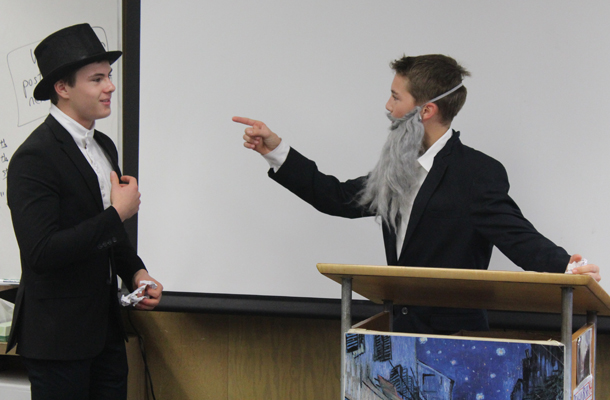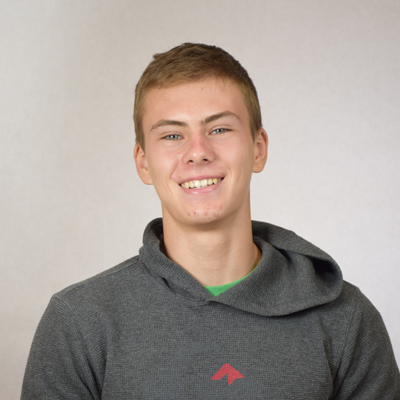Rowdy Rally Reveals History
February 24, 2017
Paul Verbanszky’s AP European History class recreated a late 19th century political rally on February 9. Students were assigned different political ideologies, and were required to dress up in a historically accurate way.
There were 8 groups of students, and each group selected 1 member to give a speech on their political ideology. Represented were the classical liberals, conservatives, anarchists, marxists, feminists, chartists, nationalists, and utopian socialists. During each speech, members of the audience were allowed to heckle the speaker, throw things, and be generally rowdy, with the speaker allowed to shout or otherwise regain the attention of the audience.
“These were not regular calm and proper speeches,” said sophomore Sofia West. “People were throwing things and heckling the speaker and insulting each other and even beginning to get physically aggressive. It was madness but it was really fun.”
Verbansky explained that 19th century political rallies were not how we imagine them today. They were extremely rowdy, fistfights and stabbings were common, and the speaker would constantly scream over the audience to be heard. Verbanszky’s classes couldn’t fully imitate the rallies, but the recreations were as close as they could get.
Sophomore Cal Hunter said, “I ran around dressed as Karl Marx. I screamed at the audience and I threw paper at hecklers, it was really fun and it took away the stress of public speaking. I couldn’t really believe that political rallies used to be this way. I thought everything was super proper.”
The rally took place during the block schedule pilot week. West said, “One of my biggest fears about block schedule was that we were going to have 90 minute lectures and a bunch of other boring activities, but we got really lucky with this because Verbanszky planned it accordingly and made block schedule fun.”
Verbanszky said, “I feel like the ideologies unit is very involved and complex . And sometimes reading things straight out of the textbook or just having a lecture can’t be understood as well by the students. And so I encourage this simulation for them to have passion, have fervor, and to comprehend it much better.”
Verbanszky plans to continue doing the project in the upcoming years.

